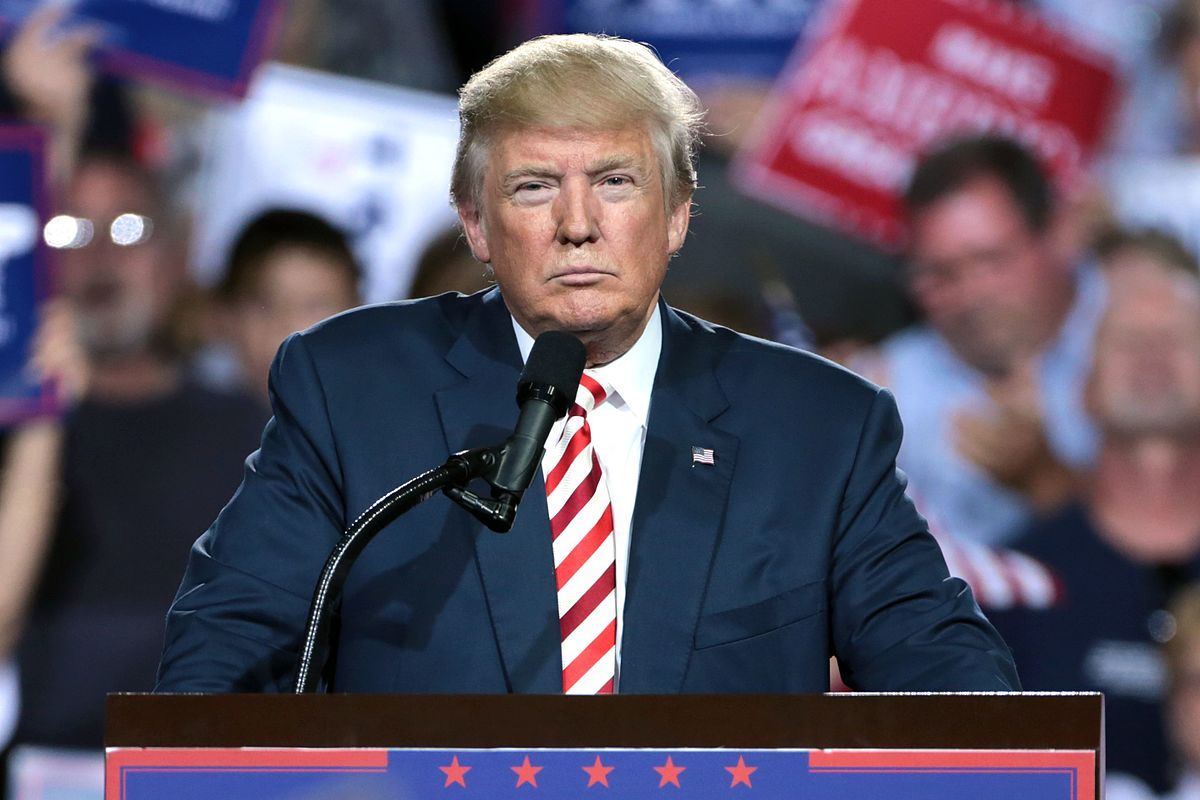
Trump is facing big legal troubles and has been thrown off the primary ballot in two states, but the former president is still topping the Republican polls. But what would he actually do as president?
We haven’t talked about Donald Trump in quite some time on this blog. He isn’t president anymore, after all. Since he left office, he’s spent most of this time lying about the 2020 election and dealing with a whole host of legal issues. Not really a lot of manufacturing news there!
And yet, Trump is not just leading the Republican primary polls for president, he’s dominating them. As of this writing, Trump in all likelihood will be the GOP’s nominee for president, and it is very much a possibility that there will be a second Trump administration.
Given all of Trump’s theatrics and court appearances, it can be hard to figure out what exactly Trump has planned policy-wise should he retake office. But over the holiday break, the New York Times offered a look at The Donald’s plans for U.S. trade if he’s elected again — and there’s a lot to dive into.
Mr. Tariff Man
Trump’s trade plans, we’ll note, are fairly broad; Trump isn’t exactly known for being a detail-oriented type of guy. But the overall theme is that a President Trump 2.0 would seek to institute additional tariffs, including “a so-called universal baseline tariff, meaning a new tax on most imported goods,” the NYT reported.
Trump offers some more thoughts on his campaign website: “Rather than raising taxes on American producers, President Trump will impose tariffs on FOREIGN producers through a system of universal baseline tariffs on most imported goods. Higher tariffs will increase incrementally if other countries manipulate their currency or otherwise engage in unfair trading practices.”
These plans have led to the usual vocal pushback from proponents of free trade, who argue that doing so will devastate both the U.S. and global economy. But it’s worth noting that these are some of the same people who sounded alarm bells when Trump instituted tariffs on both steel imports and broader imports from China during his first term.
Not only did the economy not collapse as predicted by so many pundits, but the steel tariffs helped stabilize and spur new investment in the U.S. steel industry AND the broader Chinese import tariffs led to a long overdue reset of U.S.-China relations. And even more noteworthy? President Biden has kept them in place, showcasing their effectiveness.
China’s Normalized Trade Relations Status
There was a lot of whiplash in Trump’s first term when it came to U.S.-China relations. There’s no doubt Trump’s policies, particularly on trade, completely changed the game. Post-Trump, there’s now recognition that opening trade with China back in 2001 was bad policy, and the U.S. is now taking China seriously as a threat. That may not have happened if Trump hadn’t served as president; it certainly wouldn’t have happened so quickly.
But Trump doesn’t deserve universal praise for his China policy. While Trump did get China to come to the table to negotiate the infamous U.S.-China Phase 1 trade deal, it didn’t touch on many of the key issues between the two countries and has been largely ineffective. Plus, Trump’s affinity for Chinese leader Xi Jinping has garnered criticism from his own advisers.
What may all this mean for a potential second term? The New York Times reports that Trump wants to decouple from China, and the would-be commander-in-chief goes into details on his campaign site, calling for “a 4-year plan to phase out all Chinese imports of essential goods—everything from electronics to steel to pharmaceuticals. This will include strong protections to ensure China cannot circumvent restrictions by passing goods through conduit countries.”
Another thing that caught our eye? Trump wants to end China’s permanent normal trade relations status, an idea that’s also being put forth by bipartisan policymakers — and something the Alliance for American Manufacturing supports, too.
Lighthizer Returns?
Trump has put forth additional trade policy ideas, from banning “federal contracts for any company that outsources to China” to enacting “new rules to stop U.S. companies from investing in China and stop China from buying up America, allowing only those investments that serve American interests” to implementing “a new Strategic National Manufacturing Initiative that will rebalance the global trading system and dramatically strengthen America.”
All of these, of course, will require implementation. As we mentioned above, this isn’t exactly Trump’s strong suit, which means the team he assembles to do the work will be of utmost importance.
And that brings us to perhaps the most interesting revelation in the entire NYT piece: Most of the details provided came from Robert Lighthizer, who served as Trump’s U.S. Trade Representative. In fact, the NYT made sure to note that Lighthizer “would most likely play a key role in a second term.”
Indeed, Lighthizer has not shied away from defending Trump’s trade record and calling for enactment of much of the policy proposed by the campaign now.
We found that out firsthand when AAM President Scott Paul interviewed Lighthizer for The Manufacturing Report podcast back in September, as the former USTR was promoting his book, No Trade is Free: Changing Course, Taking on China, and Helping America’s Workers.
So, if you really want to get a sense of what a second Trump administration may bring when it comes to trade, particularly trade with China, listening to what Lighthizer has had to say over the past several months would likely be the best place to start. Listen to our podcast episode with him here or wherever you get your podcasts.
